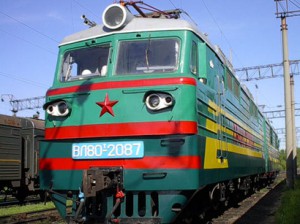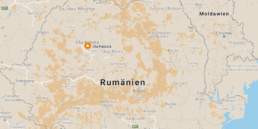In 2003 AEGEE organised its legendary Case Study Trip to Caucasus. This first event in this region triggered the foundation of AEGEE-Tbilisi and raised the interested of AEGEE towards this previously neglected part at the edge of Europe. Already the preparation trip by two AEGEE members in 2001 was pure adrenaline – they were stopped at the border and accused to be spies.

Before you can read that really fascinating article, here some background facts. “The first preparations for the Case Study Trip were made in 1999 or 2000”, says Hans Peskens, former board member of the East-West Working Group (EWWG). “Most of the preparation work was done by Raimund Kamp, later assisted by Michal Pesta. A lot of work for the actual trip was done by Aliki Louvrou later on.” First the date was set to September 2001, later postponed to 2002, in the end it took place in August 2003. Raimund and Michal made a preparation trip in September 2001. Michal Pesta wrote a really excellent article about the preparation trip, published in the AEGEE NewsBulletin in 2002 as advertisement for the CST.
Adventures at the Azeri Border
By Michal Pesta
It was a cold night when our train stopped somewhere in the middle of the fields. Shouts and a nervous atmosphere indicated that we had just reached the border. Neither me nor Raimund Kamp knew how many hours had passed, the trip seemed to be endless. We were in an old soviet train going from Tbilisi to Baku. The passport control on the Georgian side went quite smoothly. We were kindly asked to get off the train and go get our passports stamped. We paid some kind of border fee, giving our last Lari and still had some time for a fast cigarette before the train left. Ufff, that went quite well, whispered Raimund.

Arif, an Azeri man travelling together with us in the same compartment, just smiled and showed an impressive collection of the golden teeth in his mouth, shining in the moonlight. We were heading to the Azeri side, from the distance we could hear music, it must have been a wedding ceremony. It was something quite unusual to see a wedding at the border, but people dancing and having fun also improved our mood. “Maybe the officials will be absorbed by the party and they will not try to be strict.” I was trying to cheer myself up. After paying so many bribes everybody becomes suspicious.
The soldiers came. They took our passports, cold faces that are usual in many post-soviet countries, here were quite smiling to us, but suddenly they became red… Shouts! The soldiers took our passports and ran somewhere, crying loud. “What on earth???!!!” Raimund was getting quite nervous, and so did I. After five minutes more soldiers came and they were headed by a huge fat man, with thick mustache and a bunch of stars on his uniform that indicated a colonel, commander of the border crossing.
“Who are you? Why did you go to Armenia? What is in your luggage? Did you go to Nagorno Karabakh? Why are you coming to Azerbaijan???”
They were angry and they wanted fast answers. I started answering. It was difficult since their flashlights were pointed at our faces. I looked for a moment at Raimund, he was pale. I started answering in Russian (this language really helps there). “We are from AEGEE… we are students, traveling and meeting other student organizations…” I tried to explain with a trembling voice.
“Students?” The colonel was confused. “Hmm… students…ha!… Student-agent! Student-agent!” He started shouting! At the same time the rest of the soldiers burst in laughter.

With the edge of my eye I noticed that one of the soldiers found a pile of the “Key to Europe” magazines hidden in my backpack. “Ok, that’s it! Now they will really think that we are Armenian spies…” I was terrified. I was not even looking at Raimund, he couldn’t understand the language, which made him feel even worse. “Can I tell you about the Case Study Trip?” I started my presentation of AEGEE activities. “Can I offer you the Key to Europe, our bulletin?”
“Student-agent!” – he started laughing as well, “what is that thing?” He pointed at Raimund’s pen-like-flashlight. “Can I have it?”
“Hmmm, eh..uh..yes…” Now I was confused, but after a short consultation with Raimund we decided to give him the flashlight.
Suddenly they left. They wished us a happy journey, they seemed to be very happy with their new trophy. We felt a huge relief. It was almost dawn, we went to bed, in the morning the first rays of sun woke us up, behind the windows we could see deserts and countless oil fields. We were approaching Baku.

The Caucasus is a region of huge differences. Divided by the mountains unique micro-cultures on both sides of the Caucasus mountains developed. Whereas the Northern Caucasus is a part of the Soviet Union, the Southern one consists of three former Soviet republics that differ a lot from each other: Georgia, Armenia and Azerbaijan. Georgia and Armenia are two of the oldest cultures in the world, only few people know that they are the first countries that officially recognized Christianity as a state religion in the 4th century. Azerbaijan, a “sister” of Turkey, is a young nation that is the most populous country in the region and owns impressive oil and gas resources that are very promising for the country’s future.
However the region is far from unity. There are plenty of political conflicts that make the regional integration very difficult. Everybody heard about Chechenya, but still there is a lot to do about the conflict in Nagorno-Karabakh (Armenia versus Azerbaijan), South Ossetia and Abkhasia (Georgia). Relations between Russia and Georgia and Armenia and Turkey are also a huge obstacle for the regional cooperation.
It would take another three pages to describe the culture of people of Caucasus. The variety of sites and monuments is simply impressive and some of them are still little known and virtually unexplored. The hospitality of the Caucasian people is one of the most famous in the world. Being a guest is sometimes a hard thing to handle because the locals want you to try everything, see all of the interesting sites, taste all kinds of wine, cognac and other local specialties. It is a huge honor to have a guest in their house.

This causes a fact that the youth in the region encounters enormous problems with traveling abroad, student activities are still on the low level, and activities that promote mutual understanding and integration (as it is with AEGEE) face many problems.
On the other hand there is a huge potential in young people. They are and they want to be very active. They only do not know how to do it! The Case Study Trip (CST) could easily catalyze these intentions and groom the people in the region. The presence of the European students can give good examples for many of them, open their eyes and give a huge motivation. On the other hand for us it is a huge lesson of tolerance, a cultural experience that will not be forgotten for a long time.
The most important thing is that many of them feel European. Being situated between Russia and Iran not a pleasant place to be – that is why many of them complain about lack of the contact with the rest of the continent.
Below you can find AEGEE-Europe’s press release after the actual CST had taken place.
AEGEE EXPLORING THE CAUCASUS
In the second half of August, an AEGEE delegation of 14 students from all parts of Europe has paid a three week visit to the Caucasus, exploring this unknown region on the geographical edge of Europe. The declared aim of this pilot project was to learn as much as possible about Georgia, Armenia, Azerbaijan and their people, as well as to build bridges with local student organisations in view of linking them to AEGEE.
During their visit, the delegation enjoyed the legendary hospitality and stunning landscape of the Caucasus and studied its rich history and culture, as well as the current socio-economic and environmental situation of this fascinating mosaic of ethnic groups, religions and traditions. Stereotypes on both sides were replaced by personal experiences in endless fruitful discussions. At the end of the visit, all sides expressed their strong interest in maintaining and institutionalizing relations.
In the opening address to the assembled group of the participants Michael Kekenadze, head of the Georgian delegation, expressed his great enthusiasm to host such a diverse group in Tbilisi, and his hope that the group will manage to discover some of the hidden charms of the Caucasus region.
On return to Western Europe, Aliki Louvrou, project manager of the Caucasus case study trip, described this trip as a unique, revealing experience. “We had read a lot on the region before going there, but still we were stunned by the mentality of the people, where hospitality knows no limits, by the breathtaking landscapes, still undiscovered by mass tourism, by the obstacles and problems that young people face there, but still never giving up; the Caucasus may seem quite a far away region, but it has a European conscience and soul, strong, especially among young people, who read the same books, listen to the same music, have the same dilemmas and problems like any other European young person”.
Reacting upon the results, President of AEGEE Europe Diana Filip noted that ” AEGEE has always been the first to provide space for dialogue in an intercultural perspective between young students from the European continent”.
Being an AEGEE Europe project, this case study trip belongs to the framework of this year`s AEGEE year-plan project “Youth and Globalisation” that includes a survey distributed among higher education students, five Study Meetings, a case study trip and a final World Youth Summit to be held in December 2003.


